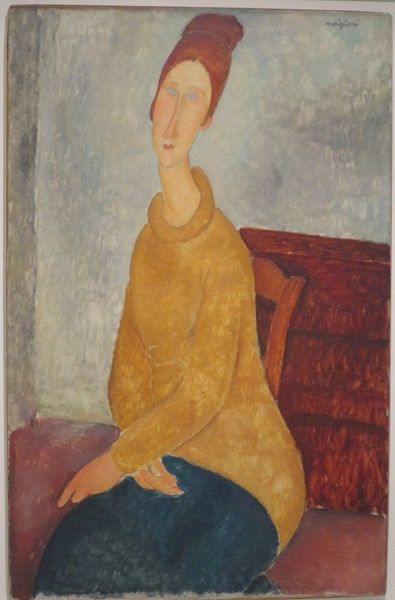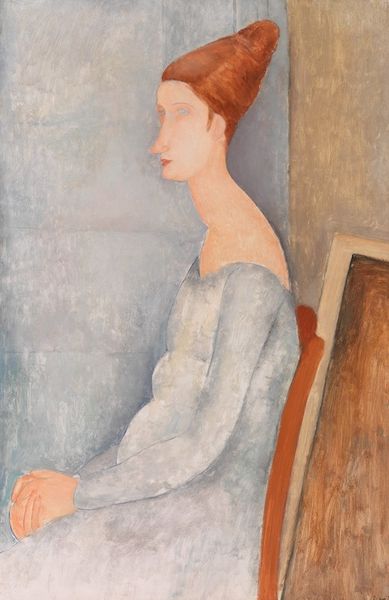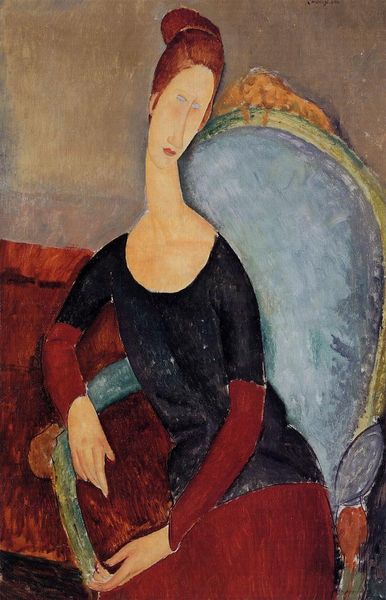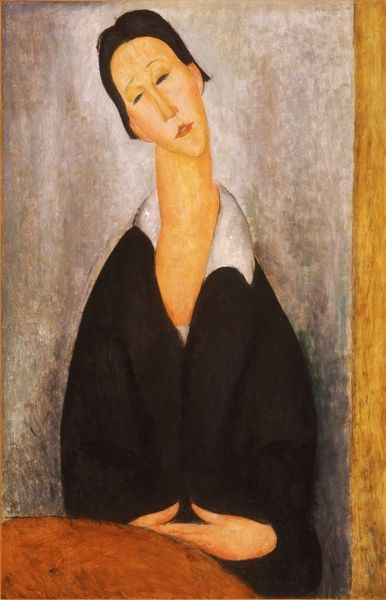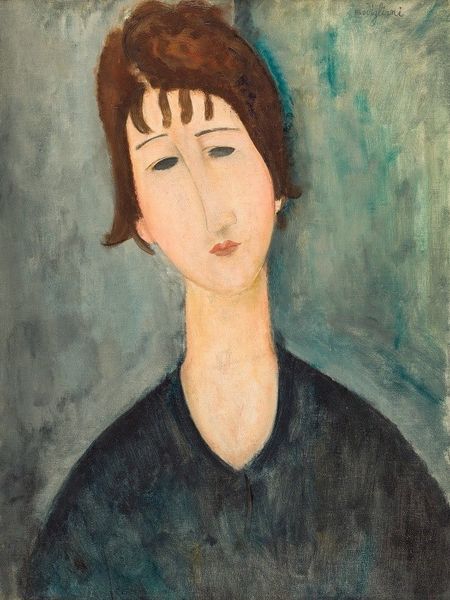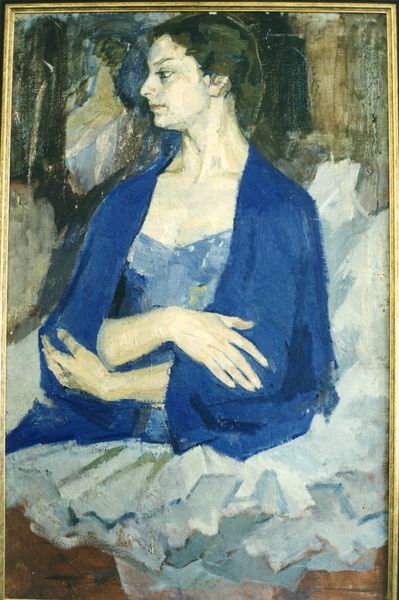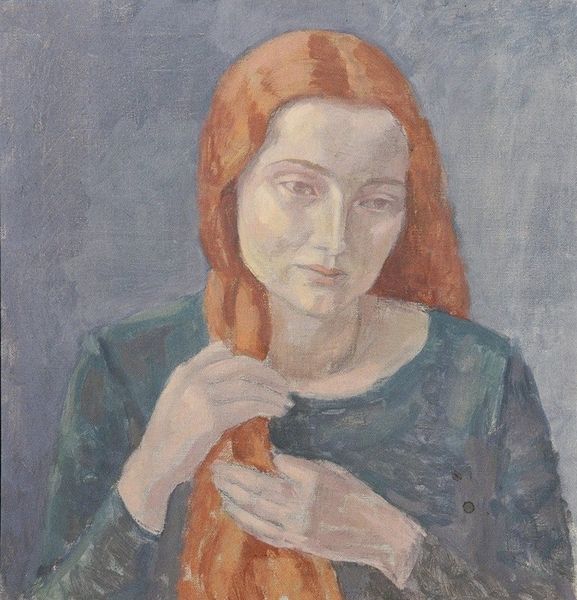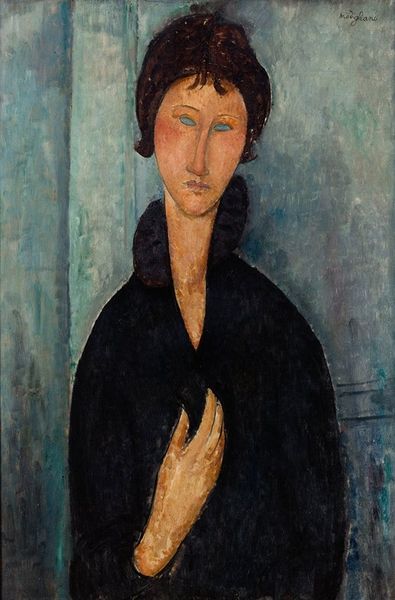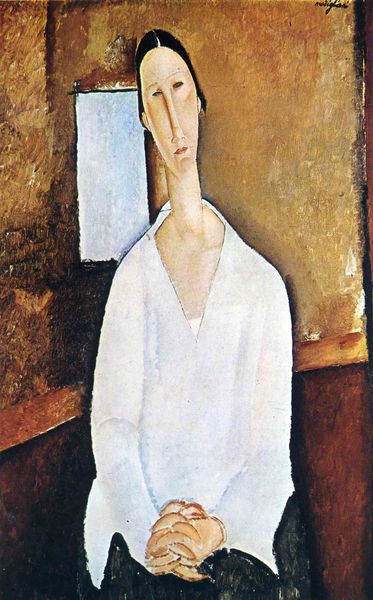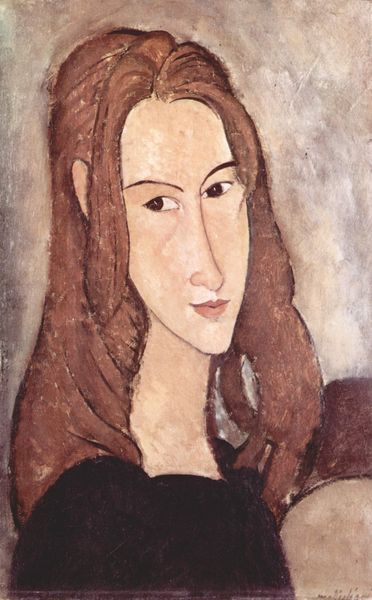
painting, oil-paint
#
portrait
#
figurative
#
painting
#
oil-paint
#
figuration
#
oil painting
#
intimism
#
expressionism
#
modernism
Copyright: Public Domain: Artvee
Editor: This is Amedeo Modigliani's "Jeune fille assise, les cheveux dénoués," painted in 1919. The girl’s pose and vacant stare give her an aura of disinterest. I am wondering what this means... What can you tell us about it? Curator: Well, let’s start with the oil paint itself. Modigliani, working in post-World War I Paris, would have had access to industrialized paints, cheaply made. Look how thinly he’s applied them. Do you notice how that thin application and quick facture allow the canvas to almost breathe through? Editor: Yes, the visible brushstrokes do make it feel less polished somehow. Curator: Exactly. Now consider the sitter. She’s not dressed in finery, is she? This suggests that Modigliani may have chosen someone from his immediate circle, someone from the working class, rather than a commissioned portrait. The simplification of form, driven by economic factors, lends itself to an 'everywoman' quality. Editor: That makes sense. He was part of the bohemian art scene, so representing working-class people aligns with the period. So are you suggesting that economic necessity may have impacted Modigliani’s artistic style and focus? Curator: Precisely. We can’t separate the means of production, the poverty he often faced, from the style he cultivated. Even his choice of subject speaks to the reality of labor and value in the Parisian art world at that time. His choices around both material, subject, and mode of production shape what he communicates. Editor: It's interesting how the material conditions shape the interpretation. Thank you! Curator: A materialist lens lets us appreciate this intimate painting and understand more about Modigliani’s practice!
Comments
No comments
Be the first to comment and join the conversation on the ultimate creative platform.

